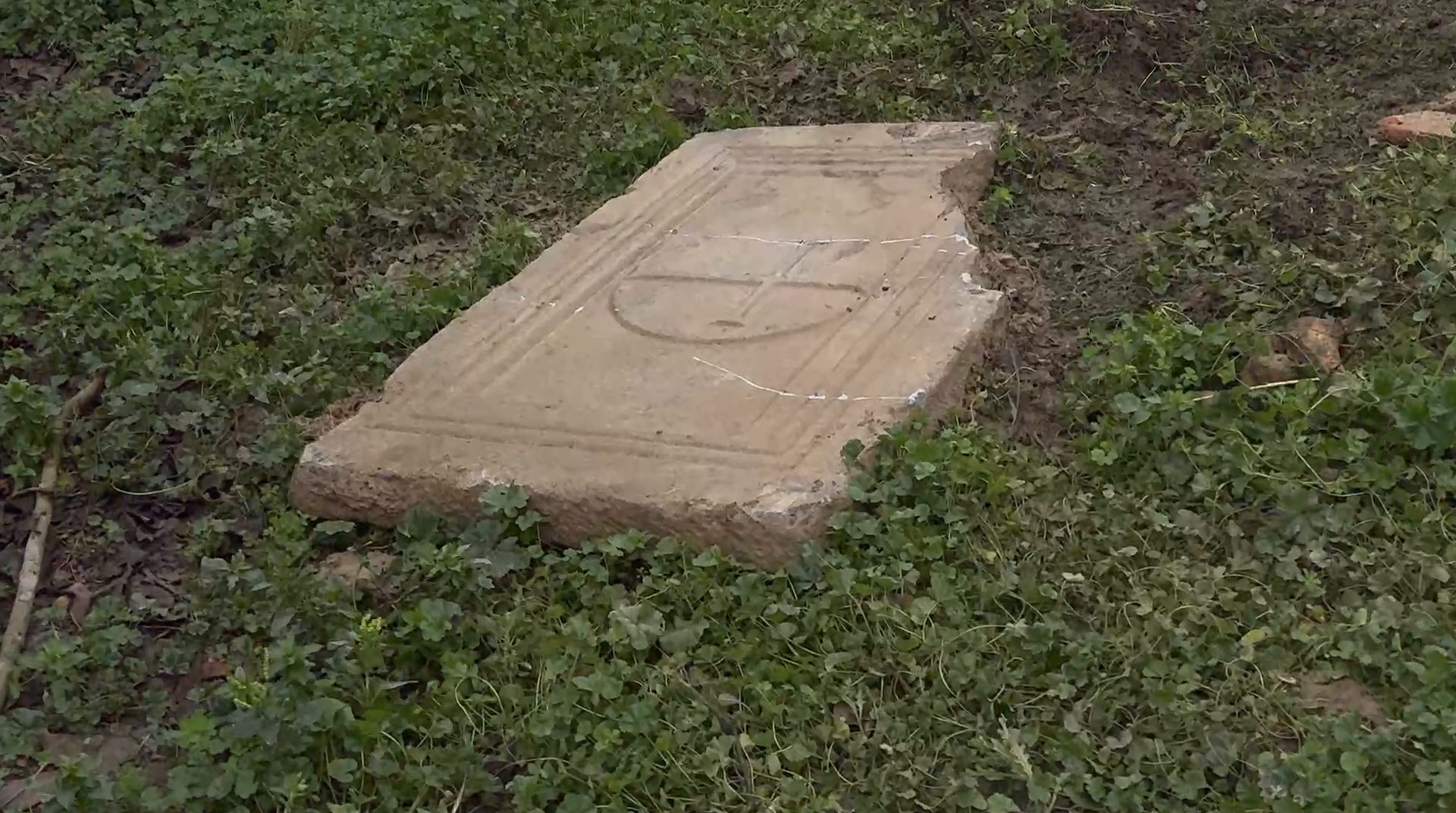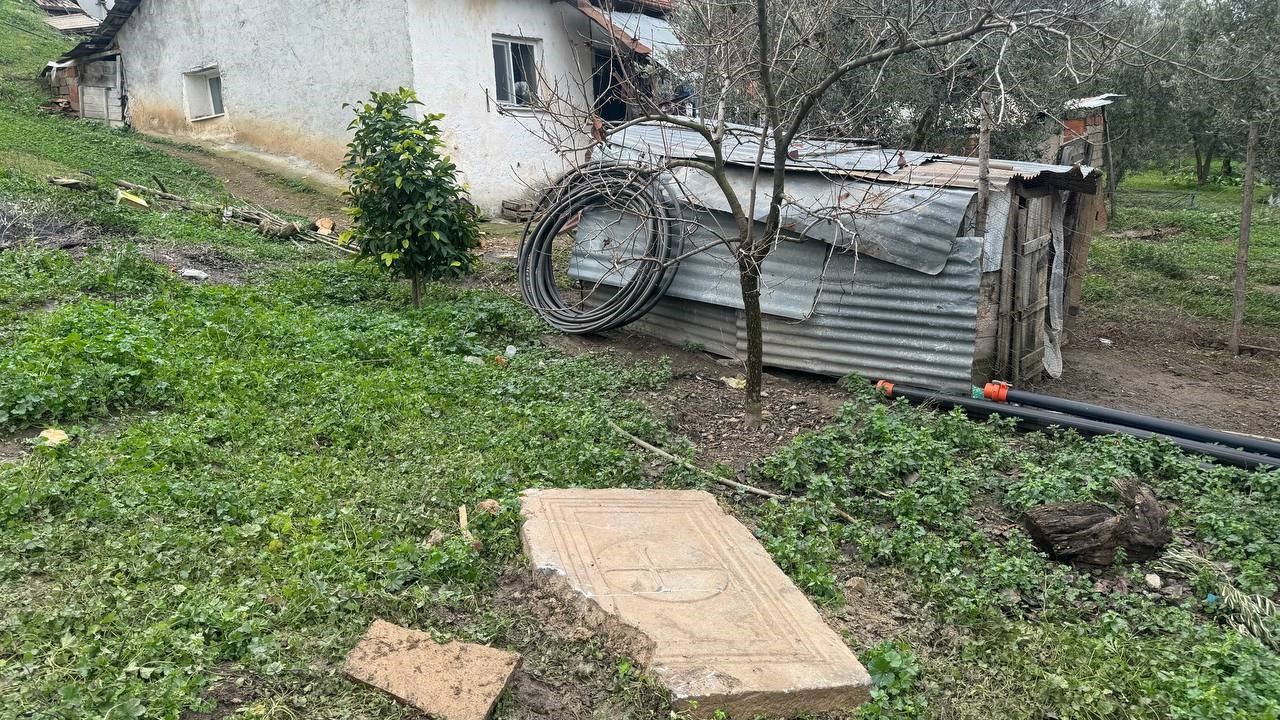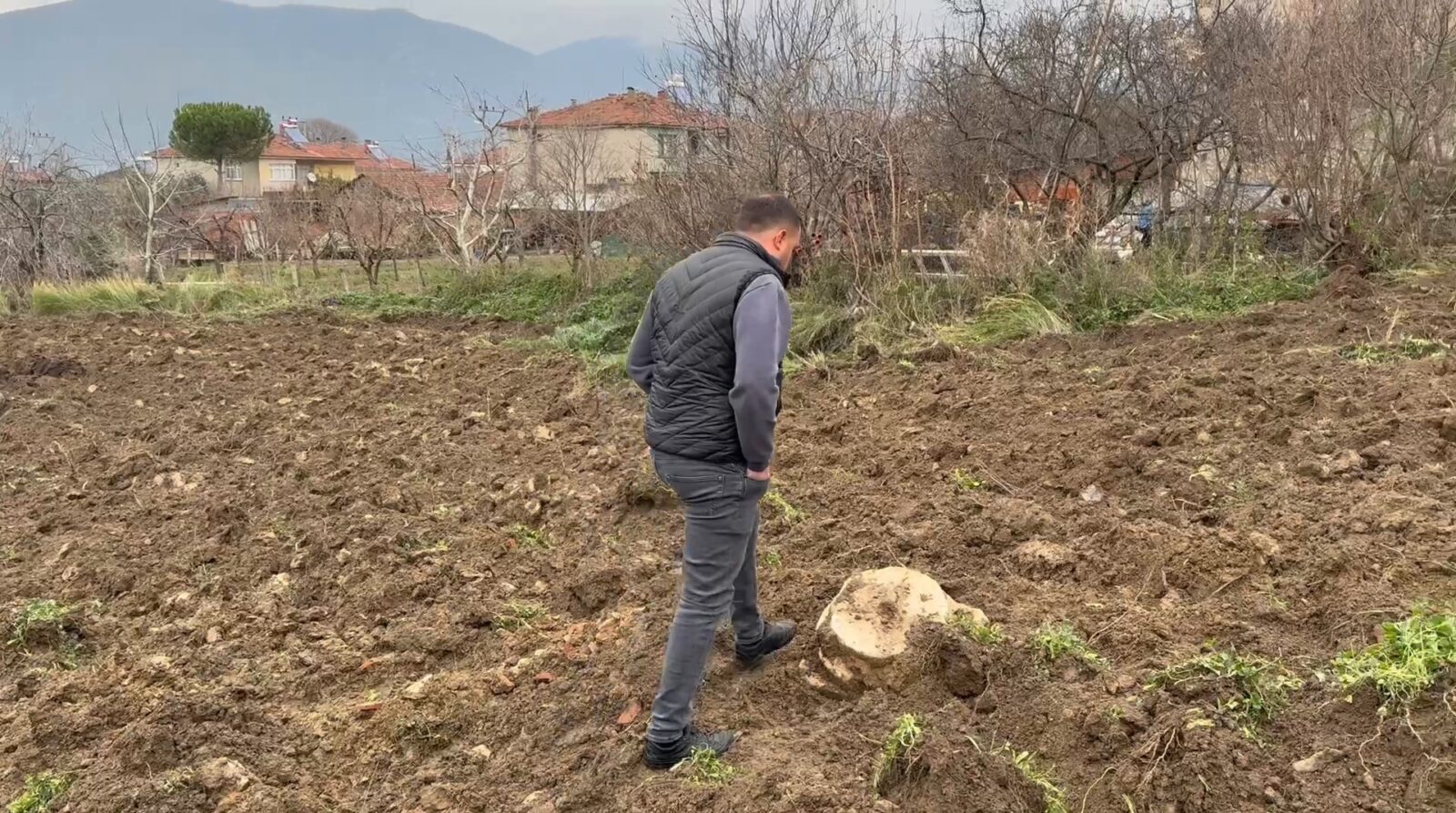
A farmer plowing his field in Hocakoy, a village in Iznik, Bursa, has uncovered an ancient stone cover and column capital.
This remarkable archaeological discovery, made in a city that was once the heart of four great civilizations, has captured widespread attention.

The farmer's plow struck the stone cover, revealing intricate designs, including a cross motif. Alongside it, human bones were discovered, adding a layer of mystery to this find.
The Iznik District Gendarmerie Command swiftly secured the site, and archaeologists from the Iznik Museum began their examination of the artifacts.

The contents of the stone cover are still shrouded in mystery. Local authorities and experts are eager to unravel its secrets, which could offer valuable insights into Iznik's rich and diverse history.
This discovery comes at a time of heightened interest in Iznik, especially with the announcement that Pope Francis is scheduled to visit the city.
The find emphasizes Iznik’s historical significance and adds to its growing reputation as a major destination for both tourists and researchers alike.

Nicaea, now known as Iznik, is an ancient city in northwestern Anatolia with a rich history, known for its significant role in early Christianity and its connection to the Ottoman Empire.
It was the site of the First and Second Councils of Nicaea, where the Nicene Creed was established.
The city served as the capital of the Empire of Nicaea following the Fourth Crusade and briefly as the capital of the Ottomans from 1331 to 1335.
Nicaea's historical importance declined after the Ottomans moved their capital to Bursa, but the city's legacy endures through its monumental walls and architectural heritage.